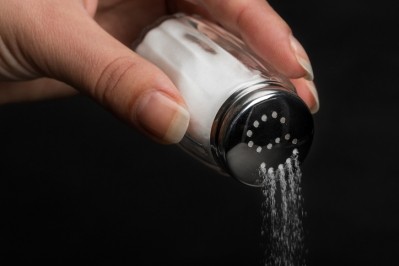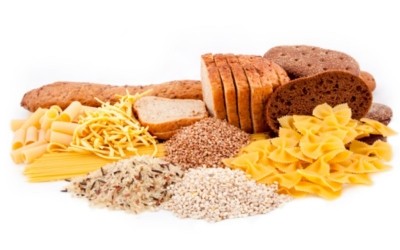Salt reformulation in Australia: Bread, cheese and processed meat identified as key targets for reduction

The study was conducted by the George Institute of Global Health, which used modelling analysis to model the potential reductions to Australian household sodium purchases after implementation of the government’s sodium reformulation programme. Nielsen data from 7,188 local households was used for the analysis.
This voluntary sodium reformulation programme is dubbed the Healthy Food Partnership. It is being implemented by the Australian Department of Health (DOH), and aims to ‘empower food manufacturers to make positive changes’ by providing firms with a set of sodium targets for 27 food categories to reformulate.
“No prior research has assessed the potential impact of the reformulation targets at the food category or food manufacturer level in Australia and there has been no evidence to show the impacts, [when] such data may help to inform both government and food manufacturers as to where the greatest reductions could be made,” study lead researcher Daisy Coyle told FoodNavigator-Asia.
“[We found that the programme’s] targets cover 16.1% of all unique products purchased by Australians (4,307 of 26,728) [and even] under the scenario that food manufacturers comply completely with the targets, sodium purchases will be reduced by just 50mg/day per capita.
“Most Australians actually consume on average some 3,500mg of salt daily, twice the recommended daily intake (2,000mg) – so this 50mg reduction wouldn’t be much of a dent, just 1.5% overall [out of the] desired 100% reduction.
Within the 27 products for which Australia has set reformulation targets (ranging from sauces to biscuits to snacks), the top food categories contributing to local sodium purchases were found to be leavened bread, cheddar style cheeses and processed meat products such as bacon and sausages.
“Leavened breads were found to contribute 95mg/day per capita to sodium purchases (out of a 443mg total from all foods), with just 35% of products currently meeting the reformulation targets of 380mg per 100g, bacon contributes 28mg with just 7% of products meeting target (1005mg per 100g), and sausages contribute 27mg with just 17% of products meeting target (540mg per 100g),” said the study authors.
“Cheddar-style cheeses contributed 57mg of sodium, but some 71% of products are currently meeting the 710mg per 100g target.”
The large contribution of these foods to sodium levels means that reformulation efforts need to come from food firms producing and selling these products, and beyond that Coyle also called for the government to reevaluate the programme and widen its scope, or even make it mandatory if it hoped to make any real impact.
“We also did a modelling analysis based on UK sodium reformulation targets and found that these 76 targets (vs Australia’s 27) would apply to twice as many products (9,927 unique products),” she said.
“[One of the reasons here is that] the UK targets had comparable sodium targets but additional food categories that are not covered by the Healthy Food Partnership, e.g. canned vegetables (11mg) and table sauces (10mg) - Almost all of the additional sodium reduction (58 mg) is from these extra categories.
“Reformulation done according to the UK targets would double the reduction to some 110 mg/day per capita – and this shows that there is scope to really improve the targets.”
Issue of impact
The study also found that 47% of all analysed products in the food categories set for reformulation were already meeting the sodium targets set out by the DOH, further impacting the potential for the programme to make significant impact.
“One of likely reasons for the limited impact of the targets, as modelled in this study, is that almost 50% of all relevant products [analysed] already met the sodium reformulation targets,” said the study authors.
“Our findings illustrate that more stringent targets are needed to ensure that only one-third of products [already] meet the targets, therefore requiring a greater proportion of products to reformulate.”
The authors also suggested that the government consider directly adopting the UK sodium targets instead, given that the study data suggests the UK targets would achieve larger reductions in categories such as processed meats (UK over 25mg reduction vs Australia less than 15mg reduction) and cheese (UK about 14mg reduction vs Australia 5mg reduction).
“One way for the Healthy Food Partnership to substantially enhance its impact [could] be to simply adopt the existing UK reformulation targets – [This] should be relatively feasible, since both countries have comparable food supplies in terms of types of food available for sale and their nutritional quality,” they said.
“Moreover, this approach would [be] hugely time-and-cost saving for the government and key stakeholders and would have started delivering health benefits for consumers much sooner.”
Coyle also stressed that one of the main lessons learnt from the UK sodium targets was that gradual reformulation appears to be an effective measure.
“The UK has been setting lower targets every few years for its reformulation programme and it seems that gradual reformulation is a good way to go, so we hope to see this applied in Australia too,” she said.
“The main idea here is that this first wave of targets is out, and the implementation of these must be strictly monitored - then gradually the targets can be applied to more and more products, stricter targets can be set, and finally, if the monitoring shows that success for the voluntary implementation is limited, hopefully the government will consider scaling the programme up to be mandatory.”
Study: Estimating the potential impact of Australia’s reformulation programme on households’ sodium purchases
Source: BMJ Nutrition, Prevention & Health
Authors: Coyle, D. et. al.


















